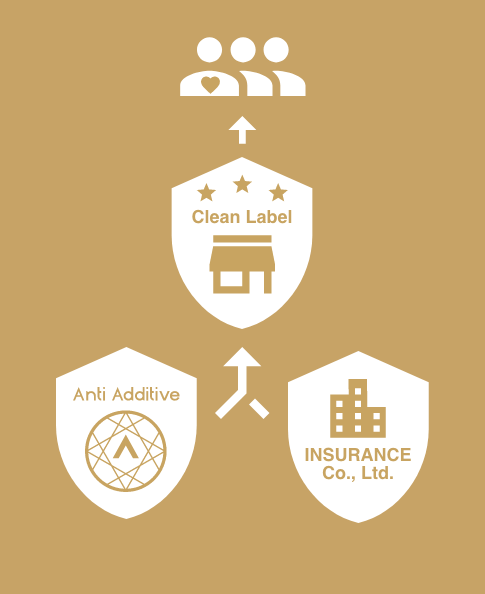The objective of the A.A. Certification
Since the 19th century, many different food additives have been developed to satisfy the needs for food production with the increasing use of processed foods in the food sector. So, the use of such additives has become more popular. International organizations such as the WHO and the Food and Agriculture Organization of the United Nations (FAO), as well as the Food and Drug Administration in each country, have imposed strict regulations on food additives, and carefully assessed the risks of food additives to human health. The Codex Alimentarius Commission has also developed food labeling standards and guidelines that have been implemented in most countries, so that food manufacturers have an obligation to indicate which additives are contained in their products. For example, in the European Union, " E-numbers" are codes for substances used as food additives; people who are allergic or sensitive to certain food additives should check the labels carefully.
The Anti-Additive Clean Label Organization promotes and encourages the food and beverage industry not to use food additives in the restaurant and product manufacturing process. The organization has been certified by the European Union and is allowed to promote Restaurant and Food Anti-additive Certification, Sugar Certification and Anti-additive Certification of Pet Food from an impartial third-party status. We invite experts and scholars in this field to serve as advisors and uphold the interest recusal principle to conduct certification assessments externally. With Restaurant and Food Anti-additive Certification, Sugar Certification and Anti-additive Certification of Pet Food, we hope to effectively reduce the use of food additives, and together with the following verification principles, to eliminate unnecessary additional additives, so that consumers have more quality food choices to protect health and consumer rights.
In addition, cleaning products used in daily life have been getting more and more attention in all countries and regions in recent years. It is an important social issue for consumers to be able to clearly identify the content and materials in all kinds of products; it is also important for upstream and downstream manufacturers to be able to maintain the production standards more effectively as well as to be able to show significant differences in distribution channels.
We welcome all manufacturers who also support the concept of no (fewer) additives and the cleanliness of their products to join the A.A. certification to promote sustainability!
THE PROCESS OF CERTIFICATION
Submit the Application
1 |
Confirm the products for certification Confirm the certification items Understand the certification norms Pay the application fee |
Submit the Documents
2 |
Confirm by the person in charge Confirm the application Verify the application documents Approve the certification items |
Conduct Substantive Examination
3 |
Submit all required documents Review the contents of the document Conduct substantive examination of production Re-exam the certification |
Certification completed
4 |
European Union issues the certificate Manufacturer obtains various authorizations Conduct random inspections after certification Promote the no-additive concept together |
WHY SHOULD I SIGN UP FOR THE A.A CERTIFICATION?

|
EXPORT ASSISTProvide overseas access resources. |

|
WELFARE COMMITTEECorporate Welfare CommitteeHelp promote brand and group buying |

|
MULTICHANNEL MARKETINGe-commerce / physical channelDiversified channels exposed |

|
A.A. Taste Awards ResourseImportant International Awards ResourcesMake the brand shine. |

|
CROSS-INDUSTRY ALLIANCEAllied Alliance 1 + 1 > 2Create new business opportunities |

|
A.A. SPECIAL PROGRAMProduct Insurance / SGS InspectionA.A. Association Exclusive Offer |
Comply with SDGS core objectives to achieve sustainable development and social benefits
According to the United Nations' 2030 Sustainable Development Goals (SDGs), the SDGs contain 17 goals, 169 targets and 230 indicators to help the world work together towards sustainability. A.A. is committed to complying with the SDGs values, particularly in terms of zero hunger, good health and well-being, clean water and sanitation, responsible consumption and production, climate action, life below water, life on land, and diversified partnerships - all types of sustainable development are the goals and social benefits that A.A. aims to achieve.
The fairness of third-party certification
Third party certification in all kinds of business activities must be open, fair and equitable in order to be effective. The third party must have absolute authority and prestige, and must be independent of the first party and the second party, and must have no financial interest or equal interest with the first party and the second party, or have the obligation and responsibility to protect the rights and interests for both parties, in order to gain the full trust from both parties. Furthermore, the third party has a social responsibility to enhance mutual trust between producers and consumers, between governments and producers, and between governments and consumers.
Whether or not a product has been certified in international trade activities is crucial if it is to be recognized in the market. Therefore, the quality of certification is the key to maintaining the credibility of the certification system. Through an impartial third-party certification system, a certification agency that has been qualified to meet all international standards will perform document review, on-site audits, and sampling inspections to certify those who meet the certification standards and continue to confirm conformity by means of follow-up inspections and random checks on commercially available products. The name of the certification agency, product name, traceability code, and the method to disclose the information should be marked in order to help consumers identify and inquire; thus, environmental sustainability can be achieved after the certification mechanism is in place.
Upgrade the goodwill and brand image
Our experts in the related fields will advise and adjust the current production process to meet the certification standards. After the standard is met, the certification label authorized by A.A. will be issued to the manufacturer, allowing consumers to identify the anti-additive products. Of course, the manufacturer will undoubtedly be more recognizable to consumers, and the product's market differentiation and brand image will be upgraded accordingly.
Win-win marketing campaign
A.A. organizations in all countries have been working hard to organize all kinds of activities to promote anti-additive products and concepts, greatly increase the exposure for manufacturers, establish a good interaction with consumers, and further improve the operating profit for all kinds of product manufacturers.
Interdisciplinary Communication
A.A. uses all kinds of platforms to share and exchange practical information on industry changes and the production technology development in each country so that each member of the A.A. organization can get the latest industry news instantly.
The exchange between the different industries makes it possible to further enhance innovation in each field.
Access to the latest information on the anti-additive process around the world
Every A.A. organization actively organizes domestic and international industry conferences, seminars, educational training or promotional activities. The members who join the advisory program can receive relevant subsidies and benefits, and obtain the latest production technology information.
Immediately access to international and local laws and regulations
In addition to providing advice to manufacturers on the latest regulations in each country, the Organization also acts as a bridge between governments and manufacturers from all over the world so that they can receive real-time information on the laws and regulations around the world. Whether it is in international trade or access to different markets, it can play an effective and immediate role and therefore leads to a positive interaction between manufacturers and governments.
HOW DOES THE CERTIFICATION PROCESS WORK?
Please, contact us via mail or phone.
2.The A.A.Teams will contact you shortly. We will propose a guidance program after in- vendor visits.
3. Under the supervision of professional experts, we require all restaurants to gradually adjust the production process to obtain the A.A. Certification.
THE PROCESS OF CERTIFICATION
1
2.Submit the Documents
3.The review is completed within 15 days after receiving the application materials
1-1 New Applicants Head to 2
1-2 Previous Applicants Head to 4
2
3
4
5
6
4-2-1 May re-apply after one year since the date of disqualification.
7
- Documents required to apply for A.A. certification and guidance -
|
|
|
|
|
|
|
|
INTERESTED IN JOINING?
CONTACT US
CERTIFICATION PRINCIPALS
Do not change the taste of the ingredients with food additives. In relatively reasonable circumstances, the exclusion of toxic or additives which may cause chronic harm and disease to the human body.
Do not shorten the production time or process with food additives. Take chicken soup as an example, according to the traditional process, to be boiled chicken several hours into a chicken soup, do not use fast and convenient chicken soup powder (block) and other ways to replace. Meals from raw materials → food → shop are following the traditional original process by step by step production.
Do not over-prolong the shelf life with food additives.
The ingredients on the menu are not factory-made products, and they should be handled and prepared in the restaurant.
The personnel, operation sites, sanitation management of facilities and quality assurance system shall meet the regulations on good hygiene practice for foods.
The products and processes have no or minimal impact on the human body, or are the least burdensome.
They are friendly to animals, plants and the environment.
The manufacturing process does not generate excessive waste in resources and has no impact on the environment.
Comply with the international standards or criteria based on the Clean Development Mechanism (CDM) (e.g. DIN, SGS, and others) to ensure the transparency, comparability and credibility of the reports.
The certification will examine whether it is in line with the SDGs.
Note: Issues related to the traceability of ingredients, such as whether the ingredients are organic, the ingredients' origin, are not included in the scope of A.A. certification.
THE FOOD PRODUCTS DO NOT CONTAIN:
Anti-Additive Clean Label Organization in accordance with the local government’s Food Safety and Hygiene Management Law, divides the common additives into the following thirteen categories:
Flavor enhancers: synthetic or refined condiments that increase the flavor of food, such as monosodium glutamate, chicken powder, stock cubes, etc...
Bleach: including hydrogen peroxide (hydrogen peroxide), sulfites, benzyl peroxide, etc...
Phosphates: including potassium dihydrogen phosphate (calcium), potassium metaphosphate (sodium), potassium pyrophosphate (sodium), potassium polyphosphate (sodium), etc…
Quality improvement agents: including color retaining agents, expanding agents, thickeners, chemicals for the food industry, emulsifiers and others.
Coloring: Contains food coloring, titanium dioxide, caramel coloring, etc...
Flavor: Contains all artificial flavors.
Preservatives: Contains hexadienoic acid, benzoic acid, deacidified acetic acid, calcium propionate, etc...
Artificial antioxidants: including dibutylhydroxytoluene (BHT), butylhydroxymethoxybenzene (BHA), tertiary butylhydroquinone (TBHO), etc…
Note-Sweeteners: food additives that impart sweetness to food or feed, such as sugar substitutes and sugar substitutes are low-calorie sweeteners, which are often added to foods that need to reduce calories. Except for those who lose weight who pay attention to calories, It also brings great convenience to diabetic patients. And sucrose, beet sugar, honey, etc. are regarded as food raw materials.
EU LICENSE OF VERIFICATION CATEGORY SERVICES
ANTI-ADDITIVE CLEAN LABEL ORGANIZATION is approved by the European Union to perform certification services, supervised by EUIPO to carry out inspections that comply with the E number.
Certification standards and advisory fees:
RESTAURANT AND PRODUCT CERTIFICATION
A.A. CLEAN LABEL CERTIFIED ONE STAR: Among commonly used food additives, there are no flavor enhancers, bleaching agents, or phosphates
A.A. CLEAN LABEL CERTIFIED TWO STARS: Among commonly used food additives, there are no no flavor enhancers, bleaching agents, phosphates, quality improvers and other six categories, artificial colors and artificial flavors.
A.A. CLEAN LABEL CERTIFIED THREE STARS: Among commonly used food additives, there are no flavor enhancers, bleaching agents, phosphates, quality improvers and other six categories, artificial colors, artificial flavors, preservatives and artificial antioxidants.
A.A. CLEAN LABEL 100% ADDITIVE-FREE: None of the food additives listed in FDA's "Standards for Specification, Scope, Application and Limitation of Food Additives" has been found.
A.A. CLEAN LABEL MEMBER: Recognize the anti-additive principle and are willing to work together to promote anti-additive or receive A.A.' advisory from working towards the anti-additive certification.
SUGAR CONTENT CERTIFICATION
No added sugar, less added sugar or contains sweeteners in food.
A.A. CLEAN LABEL SUGAR-FREE: It does not contain any sweeteners, sugar substitutes or syrups.
The sugar in solids and liquids is in compliance: no more than 0.5 grams per 100 grams of solid/semi-solid/liquid.A.A. CLEAN LABEL LOW SUGAR: It contains sweeteners, sugar substitutes, syrups and natural sugars.
The sugar in solids and liquids is in compliance: No more than 5 grams per 100 grams of solids/semi-solids and no more than 2.5 grams per 100 grams of liquids.A.A. CLEAN LABEL REAL SUGAR: It does not contain sweeteners, sugar substitutes, syrups, only natural sugar is added.
Pet food certification
A.A. CLEAN LABEL CERTIFIED ONE STAR: Among commonly used food additives, there are no flavor enhancers, bleaching agents or phosphates.
A.A. CLEAN LABEL CERTIFIED TWO STARS: Among commonly used food additives, there are no no flavor enhancers, bleaching agents, phosphates, quality improvers, artificial colors and artificial flavors.
A.A. CLEAN LABEL CERTIFIED THREE STARS: Among commonly used food additives, there are no flavor enhancers, bleaching agents, phosphates, quality improvers, artificial colors, artificial flavors, preservatives and artificial antioxidants.
A.A. CLEAN LABEL 100% ADDITIVE-FREE: None of the food additives listed in FDA's "Standards for Specification, Scope, Application and Limitation of Food Additives" has been found.
A.A. CLEAN LABEL MEMBER: Recognize the anti-additive principle and are willing to work together to promote anti-additive or receive A.A.' advisory from working towards the anti-additive certification.
Daily necessities certification
FMCG regulations are established by governments and international organizations to protect public health and the environment, and to ensure consumers can make informed choices when purchasing products. FMCG regulations often set restrictions or prohibit the use of these additives. For example, the European Union's list of toxic substances lists many chemicals considered as toxic substances. In addition, the EU also has many other regulations and guidelines to regulate the use of surfactants and organic solvents, such as the Cosmetics Directive and the Toxic Substances Control Act.
The following commonly used additives in consumer goods may have negative impacts on human body or environment.
Silicones : commonly used in hair care products such as conditioners and gels to improve hair texture and protect hair strands, but may also cause skin irritation or sensitivities, or affect hair texture.
Phosphates : commonly found in cleaning products, but may also cause skin irritation or sensitivities, or affect pollution of the environment.
Surfactants : commonly used in cleaning products and cosmetics, but may also cause skin irritation or sensitivities, or affect pollution of the environment.
Organic Solvents : commonly used in cleaning products, but may also be harmful to the environment and may potentially pose risks to humans.
There is an increasing awareness among consumers about ensuring their own health and the safety of the environment. As a result, they tend to choose products that do not contain potentially harmful substances to humans or the environment.
Our organization assists in evaluating the direct and indirect effects on human body from the additives used in consumer goods and long-term and chronic neglect in related aspects of daily life, in order to determine the risks associated with using products for consumer goods and human body.
Standard list of each Label
A.A. CLEAN LABEL CERTIFIED ONE STAR:Among the commonly used daily necessities additives, there are no Fluorescent Agent,Bleaching Agent, Phosphorus, Silicon Spirit, Mineral Oil.
A.A. CLEAN LABEL CERTIFIED TWO STARS:Among the commonly used daily necessities additives, there are no Fluorescent Agent,Bleaching Agent, Phosphorus, Silicon Spirit, Mineral Oil, Artificial Coloring, Preservative.
A.A. CLEAN LABEL CERTIFIED THREE STARS:Among the commonly used daily necessities additives, there are no Fluorescent Agent,Bleaching Agent, Phosphorus, Silicon Spirit, Mineral Oil, Artificial Coloring, Preservative,Petrochemical Surfactant, Foaming Agent, Water Softener.
A.A. CLEAN LABEL 100% ADDITIVE-FREE:Among the commonly used daily necessities additives, there are no Fluorescent Agent,Bleaching Agent, Phosphorus, Silicon Spirit, Mineral Oil, Artificial Coloring, Preservative,Petrochemical Surfactant, Foaming Agent, Water Softener, Synthetic Fragrance, Thickener.
Please contact your local A.A. office for additional information on the certification procedures.
BABY CARE
Newborns are the future and require utmost care and attention as they grow and develop. They must be protected and given the best care possible to ensure healthy growth. The same goes for the mothers who carry them, as they play a crucial role in their development and must be protected and cared for as well.
Products related to the health and well-being of newborns and mothers can encompass categories such as Diet, Health and Personal Care Products, Clothing, Educational Toys, Cleaning Supplies, Transportation Items, Home Furnishings, and Electronic Appliances. With advancements in science and technology, it is increasingly important to protect both newborns and mothers from various environmental factors.
A.A. Clean Label - Baby Care prioritizes the health of mothers and babies through strict evaluations based on Anti-additive certifications. The project is in line with the EU norms and Codex Food Codex Committee to provide the highest standards of care for all products, including diet, health and personal care products, clothing, educational toys, cleaning supplies, transportation items, home furnishings, and electronic appliances. By ensuring the safety of mother and baby food and supplies, A.A. Clean Label - Baby Care offers the best protection and care for both.
To ensure the best care for both newborns and mothers, it is crucial to use products that meet the Anti-Additive standard. By doing so, the health of both is safeguarded, giving them the chance to grow and develop healthily. The aim of A.A. Clean Label - Baby Care is to provide the best protection and care for both mothers and babies through the use of additive-free products and strict supervision.
Diet is a crucial factor in the health of both mothers and newborns. A.A. Clean Label - Baby Care checks and verifies the product specifications to ensure that food for mothers and babies is safe, free from additives, and does not affect their health. Similarly, all products related to mother and baby must meet the highest standards to ensure the best protection and care. By utilizing additive-free products and strict supervision, A.A. Clean Label - Baby Care ensures the optimal health and well-being of both mothers and newborns.
Relevant EU regulations
1. Food Allergies
EU Regulation 1169/2011 on the provision of food information to consumers (FIC) requires mandatory information for pre-packed food, an ingredient list and more. The EU recognizes 14 allergens, including cereals containing gluten, crustaceans, eggs, fish, peanuts, soybeans, milk, nuts, celery, mustard, and sesame seeds. Labelling must indicate allergens with a different font, letter size, or background color.
2. Contact Skin Allergies
EU Regulation 1223/2009 requires that any of the 26 recognized allergenic substances present in cosmetic products must be indicated on the product packaging. SCCS/1459/11 revealed humans are sensitive to more fragrances than listed. EU legislation and consultations guarantee consumer protection, with nickel content ≤ 0.5% PPDA and Annex III proposed to amend in Dec. 2020 after public consultation in Nov. 2019.
Please contact your local A.A. office for additional information on the certification procedures.
High-Protein
The health and fitness industry has seen a surge in the popularity of high-protein diets. With the media playing a major role in promoting the benefits of high-protein, both the production and consumption sides of the market have become increasingly interested in this trend. Producers aim to generate greater profits with more efficient methods, while consumers are looking for healthy and cost-effective sources of nutrition to improve their physical appearance.
However, the quality of high-protein products on the market varies greatly. While some products are genuinely high in protein, others are not what they seem to be. This disparity has led to a rise in fake or artificially modified products, which can cause confusion and uncertainty for consumers.
In order to solve this problem, the EU has implemented regulations on high-protein products to ensure their safety and effectiveness. In addition, the energy cultivated from the perspective of the AA Clean Label third-party organization provides certification for products that are truly high in protein and free of additives. By providing such certification, it is intended to give consumers peace of mind when making purchase decisions and increase industry transparency.
The high-protein trend continues to grow as consumers seek ways to improve their health and fitness. With the help of regulations and certifications, consumers can be confident in the quality and safety of the high-protein products they purchase. Producers, on the other hand, can use certifications to demonstrate the quality of their products and increase their competitiveness in the market.
According to the European Union (EU) has regulations and standards for high-protein foods. A claim that a food is high in protein can only be made if at least 20% of the energy value of the food is provided by protein. The EU also has nutrient profiles to restrict the use of claims on foods[. Alternative proteins must comply with EU food law, including Regulation (EC) No 1924/2006. Most Western diets, including European diets, have good protein quality due to the wide variety of plant proteins available.AA Clean Label provides third-party certification based on the needs of consumers and manufacturers in the market to purchase products truthfully and to have a more solid product trust.
The high-protein trend is here to stay, and with it, an increased demand for safe, effective, and authentic high-protein products. The combination of regulations, certifications, and media promotion will continue to drive the growth of this industry and ensure that consumers have access to quality high-protein products to meet their nutritional needs.
Regulation (EC) No 1924/2006
*Regulation (EC) No 1924/2006 of the European Parliament and of the Council of 20 December 2006 on nutrition and health claims on food harmonizes provisions in member state laws, regulations or administrative acts relating to nutrition and health claims. It allows Creates an EU register to record nutrition and health claims on food and replaces the previous regulation on nutrition and health claims. *
Please contact your local A.A. office for additional information on the certification procedures.
Cosmetics certification
The Cosmetics Regulation (E.C.) No 1223/2009 is the main regulatory framework for the finished cosmetic products launched in the E.U. market. This legislation affects the manufacturers and importers of cosmetics and the suppliers of cosmetic ingredients. In addition, the regulation prohibits the final formulas, ingredients or ingredient compositions and/or finished cosmetic products that have undergone animal testing from placing on the E.U. market. This certification is based on E.U. standards and checks the certified products in each country.
Refer to The Official Cosmetic Ingredient Database in EU list of banned/restricted cosmetic ingredients in EU:
Banned (Annex II)
Restricted (Annex III)
Colorants (Annex IV)
Preservatives (Annex V)
UV filters (Annex VI)
Comply with Animal Testing Ban - Testing ban and Marketing ban
We help evaluate the product safety for cosmetic manufacturers prior to placing their products on the market to provide evidence that the conditions of use are considered reasonable and foreseeable for human health in their intended use.
Please contact your local A.A. office for additional information on the certification procedures.
Residue certification
In current agricultural practice, raising animals for food relies heavily on the use of compounds with pharmacological activity: drugs. The use of drugs in food-producing animals is essential to the health and well-being of these animals and is fundamental to the industrial economy.
There are five major classes of drugs used in food animals:
Topical antiseptics, bactericides, and fungicides used to treat surface skin or hoof infections, cuts, and abrasions.
Ionophores, which alter rumen microorganisms to provide more favorable and efficient energy substrates from the bacterial conversion of feed and impart some degree of protection against some parasites.
Steroid anabolic growth promoters (whose mechanism of action resides in the interaction of estrogen-, progesterone-, or testosterone-like compounds with specific classes of hormone receptors in animal cells) and peptide production enhancers (recombinant bovine somatotropin for increased milk production in dairy cows).
Anti-parasite drugs.
Antibiotics as used to control overt and occult diseases and to promote growth.
Other U.N. and E.U. standards for limitation
The Organization assists in evaluating the use of drugs in food animal production, the practices used to administer these drugs to animals, and the processes used for drug therapy to determine the risks associated with the use of drugs in food animals.
Please contact your local A.A. office for additional information on the certification procedures.
Harmless certification
SVHCs (Substances of Very High Concern) are substances listed on Annexes of the European Union's REACH Regulation which have potential adverse effects and serious consequences in certain circumstances, with irreversible impacts. Materials in the long-term micro-direct and indirect impacts on the human body, long-term and chronic neglect, there are many unknown and unpredictable unknowns.
Human beings have highly industrialized and commercialized in the process of scientific and medical progress, making the material leaching detection more accurate. For materials used in industry and products in long-term micro-direct and indirect impacts on the human body, long-term and chronic neglect, establish health standards to reduce chronic impacts.
For materials used in daily life, the main concerns about SVHCs in the EU REACH Regulation on the potential adverse effects on human health are five:
Toxicity or other adverse effects: Certain SVHCs may be toxic, causing damage or other adverse effects to human organs (such as kidneys and liver).
Reproductive toxicity: Certain SVHCs may have reproductive toxicity, causing damage to the reproductive system or fertility.
Carcinogenicity: Certain SVHCs may be carcinogenic, increasing the risk of cancer in humans.
Biodegradability: Certain SVHCs may be biodegradable, causing damage to the environment.
Other adverse effects: In addition to the above effects, certain SVHCs may also have other adverse effects, such as damage to the immune system or effects on the nervous system.
This organization assists in the assessment of materials used in the production of objects of daily life, for direct and indirect impacts on human health in various aspects, long-term and chronic neglect, in order to determine the risks associated with the use of materials in products used in daily life.
Please contact your local A.A. office for additional information on the certification procedures.
ESG
ESG (Environmental, Social, Governance) is a standard used to measure the sustainability and social impact of a company or organization in terms of environment, society and governance. It considers a company's environmental, social and governance performance, including environmental management, treatment of employees and customers, corporate responsibility and ethical practices, among others. Many investors, consumers and other stakeholders use ESG criteria to assess a company or organization's long-term sustainability and social responsibility. To demonstrate their commitment to sustainability and social responsibility, many companies now publish information about their ESG performance and practices.
There are various approaches to measuring and reporting ESG performance, depending on the specific goals and priorities of a company or organization. Below are some common approaches to measuring and reporting ESG performance:
Standardized reporting frameworks: There are a number of standardized reporting frameworks available for companies to report on their ESG performance, including the Global Reporting Initiative (GRI), the Sustainability Accounting Standards Board (SASB) and the Task Force on Climate-Related Financial Disclosures (TCFD). These frameworks Provides guidance for companies to report on specific ESG measures and can be used to compare the performance of different companies.
Environmental, Social and Governance Ratings: Various organizations such as MSCI, S&P Global and FTSE Russell provide ratings and rankings that assess companies' ESG performance. Investors can use these ratings to make informed investment decisions.
Custom Reporting: Some companies may choose to develop their own custom ESG reporting frameworks or metrics to reflect their specific goals and priorities. These reports can be used internally to track business performance or shared with stakeholders.
Third-party verification: Companies can choose to have their ESG performance independently verified by a third party, such as a certification body or a sustainability consultancy. This provides assurance to stakeholders that a company's ESG performance is being accurately reported. Verification can be done through a variety of methods, such as on-site assessments, document reviews, or interviews with company representatives.
The organization has developed a practical approach based on years of guiding certification products and auditors setting non-add-on certifications, which can be used to strengthen a company's ESG assessment business and make it more timely. Use the framework of the above four methods of third parties to measure the company's ESG performance and evaluate the company's ESG certification from a pragmatic perspective.
Through the accumulation of many years of practical experience, the agency has rich experience in additive-free certification, and has achieved successful results in certification product guidance and auditor setting. We translate these practical lessons by helping companies to be more practical in their ESG assessments. Using the above four methods as a framework, measure corporate ESG performance from a practical perspective and evaluate corporate ESG certification.
Please contact your local A.A. office for additional information on the certification procedures.
TOTALLY TRUE
TOTALLY TRUE means that the entire process of the enterprise is transparent, and the enterprise adheres to the principle of transparency in all aspects of the process from product production to consumers. The company attaches great importance to hard work and product responsibility, which is the basis for the company's gradual accumulation of trust. Businesses are committed to transparently revealing the truth and avoiding any lies to protect the rights of consumers while preserving the trust that companies have worked so hard to build over the years.
TOTALLY TRUE, is transparent in the entire enterprise process, and the third party evaluates the transparency of the entire company process in accordance with relevant European standards, including product production quality, registration information disclosure, marketing truthfulness, channel responsibility, after-sales service and dispute warranty. Through the evaluation of these standards, the confidence accumulated in the business operation can be ensured, and the rights and interests of consumers can be further protected.
For example, some products claim in the media that they are the best-selling products, the most efficient products, or the most authoritative products in a single field. We all need to go through the AA TOTALLY TRUE mechanism to verify whether it is really what he said. Indeed, these are the mechanisms that AA TOTALLY TRUE assists other third parties in various fields to ensure that product descriptions are completely true.
In terms of product production quality, evaluate whether the enterprise meets the standard additives and other requirements in the production process.
In terms of registration and disclosure, evaluate whether the company accurately labels product information as required.
In terms of authentic marketing, evaluate whether the company guarantees that the credit guarantee it provides is authentic and credible.
In terms of industry responsibility, evaluate whether the enterprise has undertaken social responsibility in terms of carbon emission reduction.
In terms of after-sales service, evaluate whether the company can quickly respond to consumers' questions about the product.
In terms of dispute warranty, after confirming the consumer's dispute on the product, evaluate whether the company can provide an appropriate warranty.
Through a comprehensive assessment of the transparency of the entire enterprise process, the organization helps companies ensure the trust they have accumulated in their operations and further protect the rights and interests of consumers. The whole process of enterprise standards is transparently inspected and verified.
Please contact your local A.A. office for additional information on the certification procedures.
Note: EU related standards
Construction Quality: EU Construction Quality Guidelines (CQI-9) Registration Disclosure: EU Consumer Quality Legislation (CE Marking) Abusive Marketing: The Unfair Business Practices Directive Channel Responsibility: EU Social Responsibility Law for Carbon Emission Reduction (Corporate Social Responsibility Directive) After sales service: EU consumer quality legislation (CE marking) Guarantees in case of disputes: European Consumer Protection Legislation (Directive on Unfair Commercial Practices)
The above-mentioned EU standards can help enterprises comply with relevant requirements in terms of product production quality, registration disclosure, false marketing, channel responsibility, after-sales service and dispute protection, guarantee product quality and service level, and protect consumer rights. and interests at the same time.
In terms of product production quality, the EU Manufacturing Quality Guidelines (IQC-9) stipulates the basic principles and control requirements that must be followed in the manufacturing process to ensure quality and consistency. The product. In terms of registration and disclosure, the European Consumer Quality Law (CE Marking) requires companies to mark their products to ensure that consumers can understand the basic characteristics and safety of products. In terms of misleading marketing, the EU Consumer Law (Unfair Commercial Practices Directive) prohibits businesses from using false or misleading marketing to protect consumers.
Halal plus certification
A Halal certified product is a product certified to be in compliance with a series of manufacturing standards specified according to the Islamic Law or ‘Shariah’. These standards regulate all the related aspects of the products, including its ingredients, feeds and slaughtering of animal-based material, manufacturing process, hygiene and safety requirements, packaging, labeling, and transportation, etc.
According to Halal' s higher cleanliness and hygiene assessment on products and raw materials, more strict cleanliness standards are set:
Natural ingredients: no artificial fragrances, colors and preservatives or synthetic additives.
Simple: Fewer chemicals and recognizable ingredients that don't sound chemical or artificial.
Transparency: Information about the raw material sources and product manufacturing processes.
Minimal processing: Processing using techniques that consumers do not recognize as manual.
According to the aforesaid specifications for food additives, the Organization verifies that the products meet the halal standards and cleanliness requirements.
Please contact your local A.A. office for additional information on the certification procedures.
RESTAURANT | FOOD ANTI-ADDITIVE CERTIFICATION
100% Additive Free
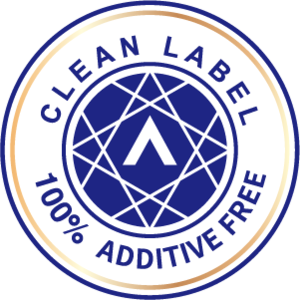
THREE STARS
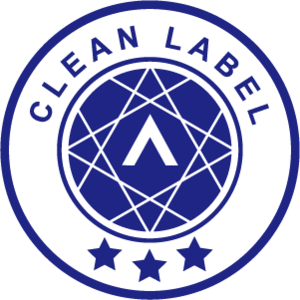
TWO STARS
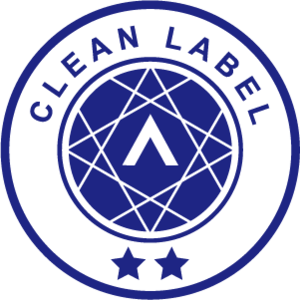
ONE STAR
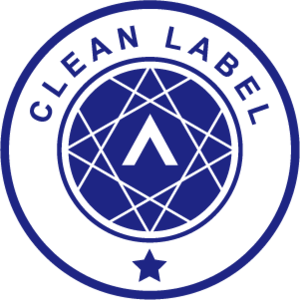
TUTORING
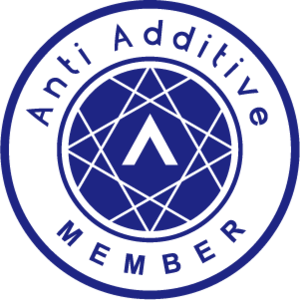
CERTIFICATION FEE | 100% Additive Free € 5,600 / per item | Certification Fee € 3,360 / per item | Tutoring Fee € 300/ per item |
SUGAR CERTIFICATION
REAL-SUGAR
REAL-SUGAR
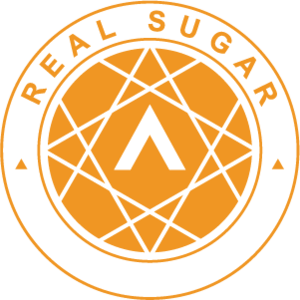
LOW-SUGAR
LOW-SUGAR
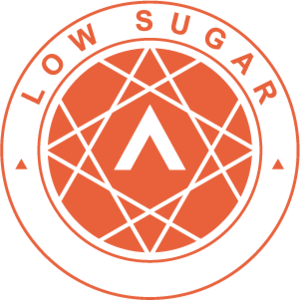
SUGAR-FREE
SUGAR-FREE
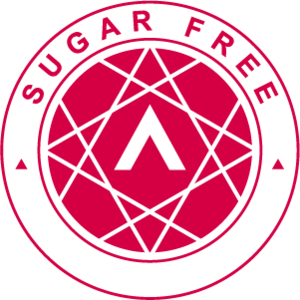
CERTIFICATION FEE | Calculate according to the number of products. Single item verification fee € 3,360 / per item |
ANTI-ADDITIVE OF PET FOOD
THREE STARS
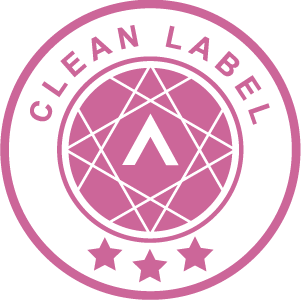
TWO STARS
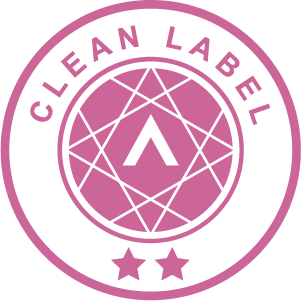
ONE STAR
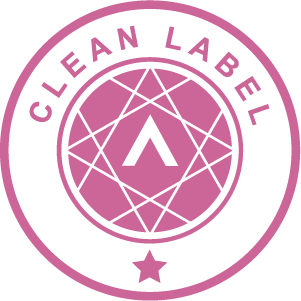
100% Additive Free
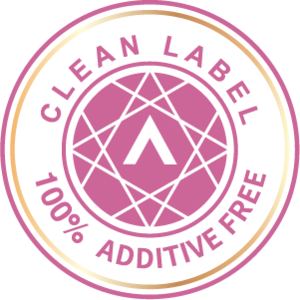
CERTIFICATION FEE | 100% Additive Free € 5,600 / per item | Certification Fee € 3,360 / per item |
DAILY NECESSITIES
THREE STARS
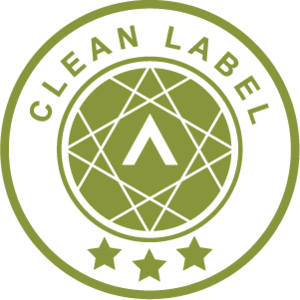
TWO STARS
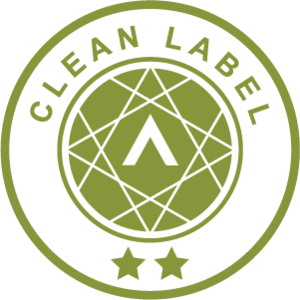
ONE STAR

High-Protein
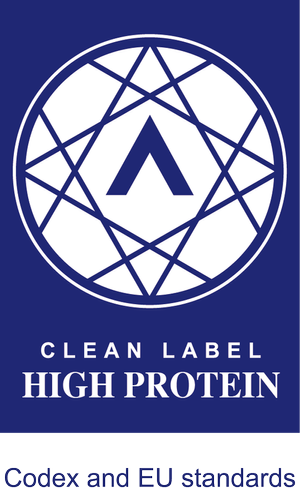

COSMETICS
THREE STARS
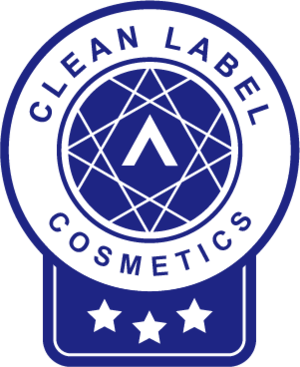
TWO STARS
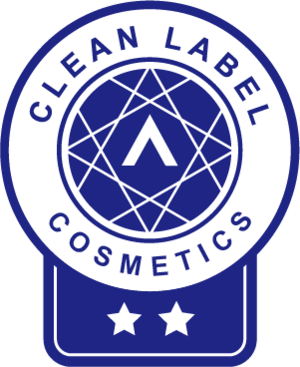
ONE STAR
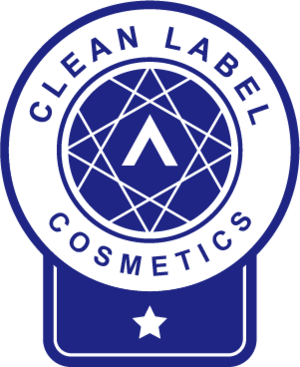
HARMLESS MATERIAL

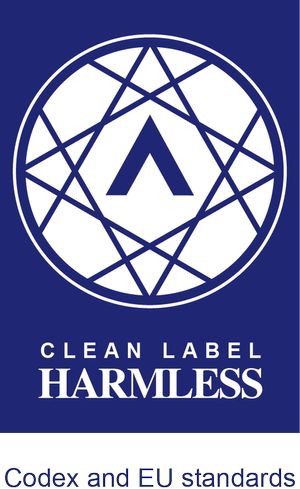
TOTALLY TRUE

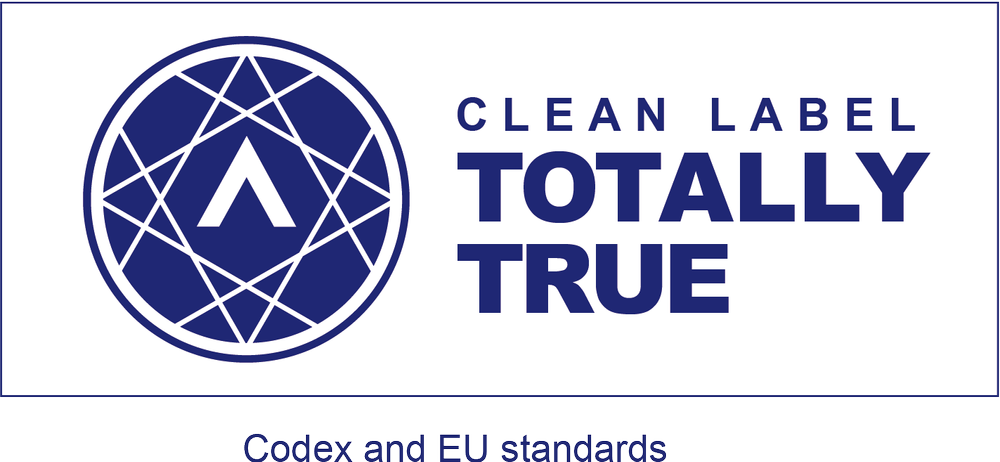
HALAL PLUS
THREE STARS
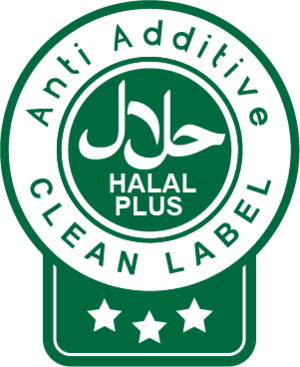
TWO STARS
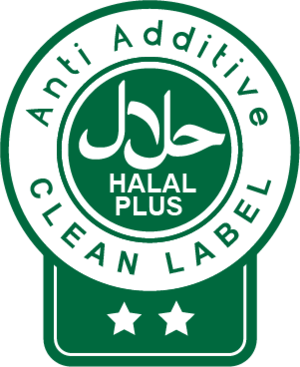
ONE STAR
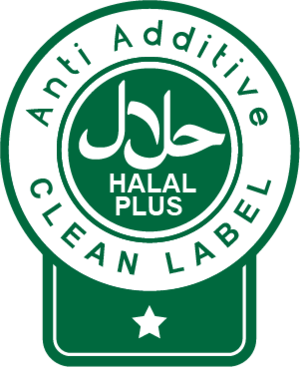
LABEL OF PRODUCT APPLICATION


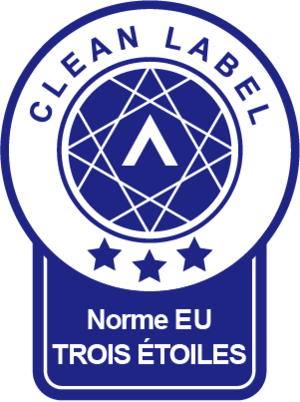
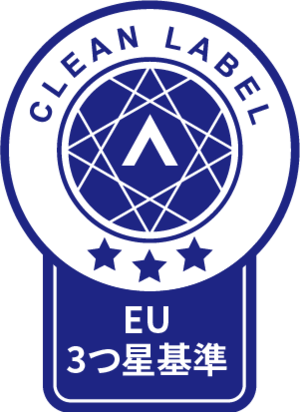
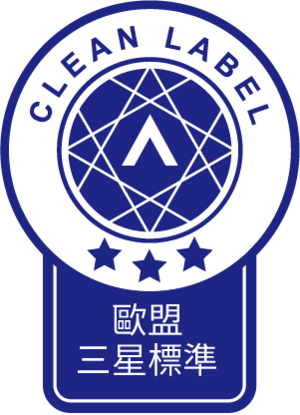
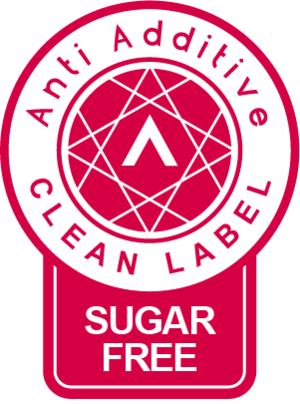
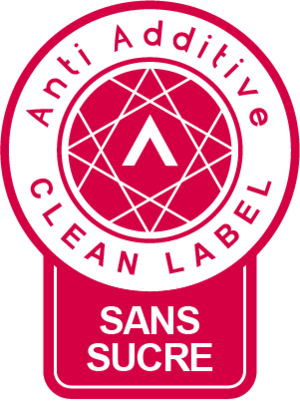
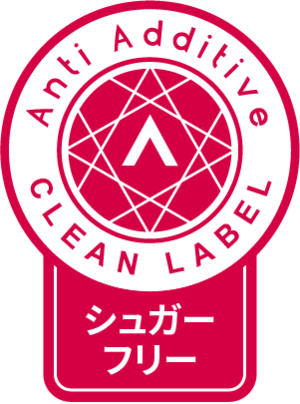

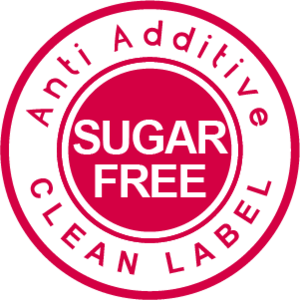
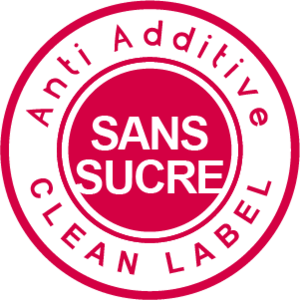
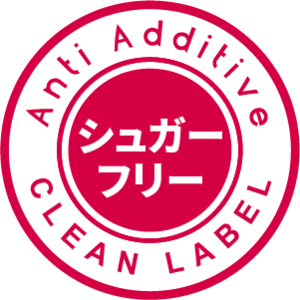
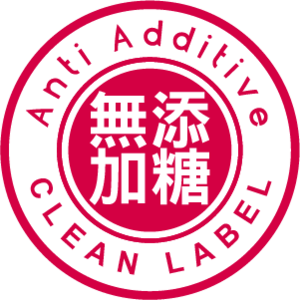

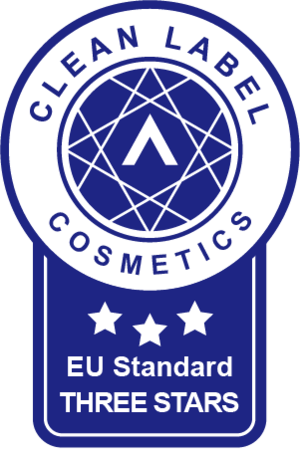
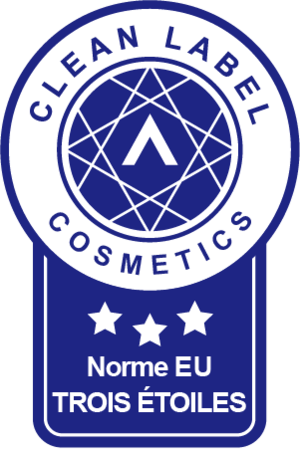
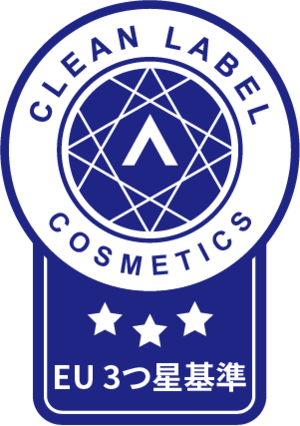
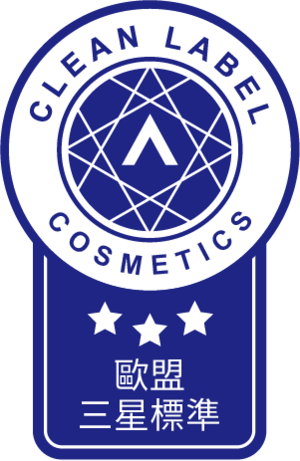
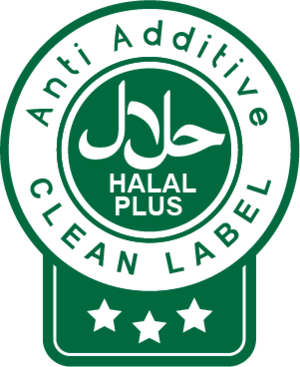
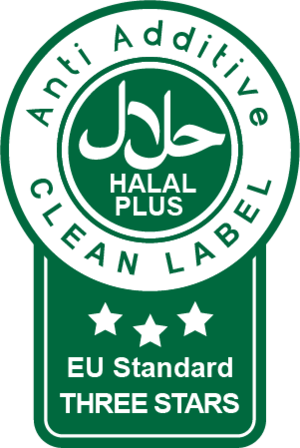
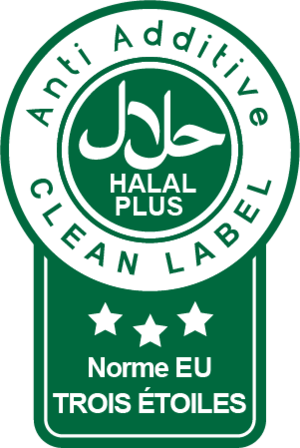
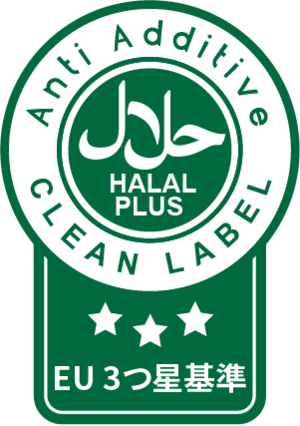
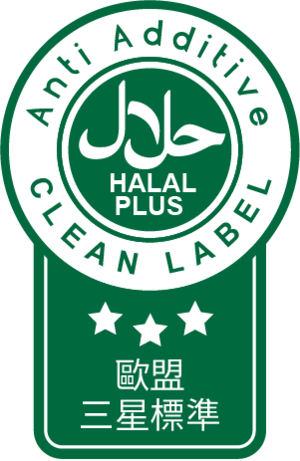
*The above fees are all based on one year. In the event of force majeure, Anti-Additive Clean Label Organization reserves the right to change or extend the time.
Join Tutoring system
Note: Some brands are members who are counseling, and their product ingredients are under revision and have not yet obtained formal certification. As improvement is completed and passed the inspection, it will become a certified product after the A.A. announces it.
Contact Us
Project Insurance Service
A.A. Establish a fair and rigorous verification system to ensure the connotation of the food manufacturing process and coordinated promotion. Hope to bring a stable no-additive diet to consumers.
We also understand that through cross-industry cooperation, we can help companies avoid financial risks, supply risks, management risks, and increasingly severe environmental risks, so as to ensure the sustainable operation of the company through verification and guidance.
All A.A. verification and tutoring companies can enjoy preferential membership status and enjoy professional protection consulting rights under the product insurance of public accident liability insurance, commercial fire insurance, product liability insurance, employer compensation liability, employer liability insurance, and cargo transportation insurance.
Those who are interested, please contact the regional association to help you fill out the form for consultation.
Contact Us
— RIGHTS AND OBLIGATIONS—
RIGHTS AND OBLIGATIONS OF A.A.
A.A. shall announce any changes to the verification procedures, regulations or requirements on its website.
A.A. shall update the list of operators that have passed the verification process on its website or make the relevant announcement by other means.
A.A shall issue A.A. verification, stickers or wooden plate (three-star rating only) to operators who have passed the verification process.
Once the participant passes the A.A. verification and awarded a two-start or one-star rating should be applying a sticker or wooden plate separately.
Operators participating in the verification system can receive the latest newsletters related to the latest government regulations and A.A.Operators participating in the verification system can participate in any type of professional seminars and courses organized by A.A. (Visit A.A.’s official website for more details)
Operators participating in the verification system are eligible to participate in the A.A. Taste Awards.Operators Who apply for the A.A. Certification will be able to use A.A. authorized VI Guide Book (only for electronic platforms) and valid for one year.
A.A. shall provide media exposure to suitable stores from time to time according to media requests.
RIGHTS AND OBLIGATIONS OF OPERATOR
Operators shall submit the actual documents required for the relevant verification, and cooperate with A.A. to provide the relevant information.
Operators shall accept the audit of the application case arranged by A.A., as well as A.A.’s tracking and re-audit at regular or irregular intervals.
Operators must recognize the anti-addictive concept and must be willing to gradually remove additives.
Operators and A.A. shall jointly promote the anti-addictive spirit.
Operators try their best to attend public events organized by A.A.
Operators shall recommend other operators who are willing to embark on the journey to anti-additive F&B and food products to join A.A.
For verified restaurants and products, operators shall allow without any charge and authorize A.A. to disclose their information on various platforms, such as promotional materials, websites, and apps, as a reference to consumers when making selections.
RIGHTS TO TERMINATE CERTIFICATION
If an operator which has passed the verification is found by A.A. to be involved in any of the following circumstances, A.A. shall revoke the operator’s right to use its stickers, certificate and wooden plate and require the operator to return them to A.A. The operator can only re-apply for verification one year from the revocation date. If the operator has passed on-site assessment but is yet to receive the certificate and wooden plate, A.A. shall not issue the certificate and wooden plate to the operator.
The operator’s certificate has expired but the operator is yet to re-apply for a new certificate.
The operator ceases operations permanently.
The operator directly adds the types of food additives specified in A.A.’s certification regulations to the F&B in the preparation stage during the application process.
The operator uses F&B ingredients that are not approved in accordance with government regulations.
It is confirmed that the operator fails to pass the assessment.
Changes made by the operator to the address of dining places do not match the address of such dining places provided during the application or on the certificate.
The operator is involved in other major violations.
CONFIDENTIALITY OBLIGATIONS
A.A. shall maintain the confidentiality of the relevant data and information provided by operators.
A.A. shall not use, disclose or reproduce confidential information, except for employees, members of the assessment committee, and professional consultants at A.A. who are required to know such information due to their involvement in the provision of certification services.
A.A. shall not use confidential information for other purposes except for certification services. The aforementioned confidential information does not include any information in the following circumstances:
The information provided by the operator is already publicly disclosed at the time or is publicly disclosed at a later time, not due to the negligence of A.A.
The information is obtained by A.A. from third parties without having to fulfill any confidentiality obligation to the operator.
The information has been held by A.A. as it has been provided previously by the operator, and can be proven with written records.
The information is personally developed by A.A.’s employees without referencing any confidential information in any way and can be proven with written records.
The information is provided as required by the regulations or government agencies.
EU LICENSE OF VERIFICATION CATEGORY SERVICES
ANTI-ADDITIVE CLEAN LABEL ORGANIZATION is approved by the European Union to perform certification services, supervised by EUIPO to carry out inspections that comply with the E number.
The inspection content is as follows: allspice; almond paste; almond confectionery; baking powder; baking soda [bicarbonate of soda for cooking purposes]; bicarbonate of soda for cooking purposes [baking soda]; baozi [stuffed buns]; barley meal; batter mixes for okonomiyaki [Japanese savoury pancakes]; batter mixes for okonomiyaki [Japanese savory pancakes]; bean meal; biscuits; cookies; bread; bread rolls; breadcrumbs; buckwheat, processed; buckwheat flour; bulgur; buns; burritos; cake powder; cake batter; cake dough; cake frosting [icing]; cakes; candy; candy decorations for cakes; capers; caramels [candy]; celery salt; cereal preparations; cereal bars; cereal-based snack food; chamomile-based beverages; cheeseburgers [sandwiches]; chewing gum; chewing gum for breath freshening; chicory [coffee substitute]; chips [cereal products]; chocolate; chocolate beverages with milk; chocolate mousses; chocolate decorations for cakes; chocolate spreads containing nuts; chocolate-based beverages; chocolate-based spreads; chocolate-coated nuts; chow-chow [condiment]; chutneys [condiments]; cinnamon [spice]; cloves [spice]; cocoa; cocoa beverages with milk; cocoa-based beverages; coffee flavourings; coffee flavorings; coffee; coffee beverages with milk; coffee-based beverages; condiments; confectionery; sugar confectionery; cooking salt; corn flakes; maize flakes; corn flour; corn meal; maize flour; maize meal; corn, milled; maize, milled; corn, roasted; maize, roasted; couscous [semolina]; crackers; cranberry sauce [condiment]; cream of tartar for culinary purposes; croûtons; crushed barley; crushed oats; curry [spice]; custard; dessert mousses [confectionery]; dough; dressings for salad; dulce de leche; essences for foodstuffs, except etheric essences and essential oils; ferments for pastes; flavourings, other than essential oils, for cakes; flavorings, other than essential oils, for cakes; flavourings, other than essential oils, for beverages; flavorings, other than essential oils, for beverages; Flour; meal; flour-based dumplings; flowers or leaves for use as tea substitutes; fondants [confectionery]; food flavourings, other than essential oils; food flavorings, other than essential oils; Freeze-dried dishes with the main ingredient being rice; lyophilized dishes with the main ingredient being rice; lyophilised dishes with the main ingredient being rice; freeze-dried dishes with the main ingredient being pasta; lyophilised dishes with the main ingredient being pasta; lyophilized dishes with the main ingredient being pasta; fruit jellies [confectionery]; fruit coulis [sauces]; garden herbs, preserved [seasonings]; gimbap [Korean rice dish]; ginger [spice]; gingerbread; glucose for culinary purposes; gluten prepared as foodstuff; gluten additives for culinary purposes; golden syrup; groats for human food; halvah; ham glaze; high-protein cereal bars; hominy; hominy grits; honey; hot dog sandwiches; husked barley; husked oats; ice cream; ice, natural or artificial; edible ices; instant rice; jiaozi [stuffed dumplings]; ketchup [sauce]; Kimchijeon [fermented vegetable pancakes]; leaven; linseed for culinary purposes [seasoning]; flaxseed for culinary purposes [seasoning]; liquorice [confectionery]; lomper [potato-based flatbread]; lozenges [confectionery]; pastilles [confectionery]; macaroni; macaroons [pastry]; malt biscuits; malt for human consumption; maltose; marinades; marzipan; mayonnaise; meat pies; molasses for food; muesli; mustard meal; mustard; natural sweeteners; noodle-based prepared meals; noodles; ribbon vermicelli; nut flours; nutmegs; oat flakes; oat-based food; oatmeal; okonomiyaki [Japanese savoury pancakes]; okonomiyaki [Japanese savory pancakes]; onigiri [rice balls]; palm sugar; pancakes; edible paper; pasta; pasta sauce; pastila [confectionery]; pastries; pastry dough; pâtés en croûte; peanut confectionery; pelmeni [dumplings stuffed with meat]; pepper; peppermint sweets; peppers [seasonings]; pesto [sauce]; Petit-beurre biscuits; petits fours [cakes]; piccalilli; pies; pizzas; popcorn; potato flour; powders for making ice cream; pralines; propolis; bee glue; puddings; quiches; quinoa, processed; ramen [Japanese noodle-based dish]; ravioli; relish [condiment]; rice; rice cakes; rice pudding; rice pulp for culinary purposes; edible rice paper; rice-based snack food; royal jelly; rusks; saffron [seasoning]; sago; salt for preserving foodstuffs; sandwiches; sauces [condiments]; seasonings; seaweed [condiment]; processed seeds for use as a seasoning; semolina; senbei [rice crackers]; sherbets [ices]; sorbets [ices]; soba noodles; soya flour; soya sauce; soya bean paste [condiment]; miso [condiment]; spaghetti; spices; sugar; sushi; sweetmeats [candy]; tabbouleh; tacos; tapioca; tapioca flour; tarts; tea; tea-based beverages; tomato sauce; tortillas; turmeric; udon noodles; unleavened bread; unroasted coffee; vinegar; waffles; wheat flour; wheat germ for human consumption; yeast; frozen yoghurt [confectionery ices]; frozen yogurt [confectionery ices]; zephyr [confectionery]; zefir [confectionery].
OTHER
A.A. shall have the final say in any unspecified matters in the Regulations.
Please state whether the applicant is a member or a member of the organizations listed in "COUNCIL DECISION (CFSP) 2019/1341".









